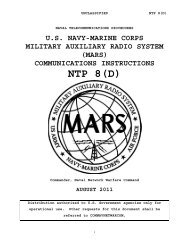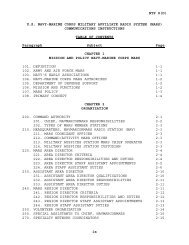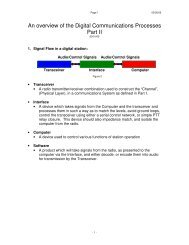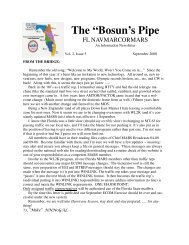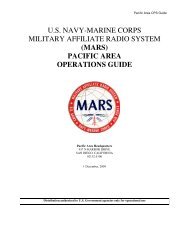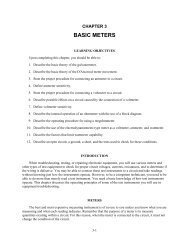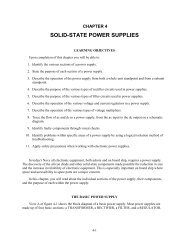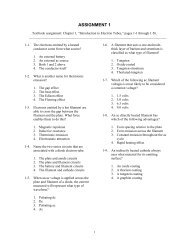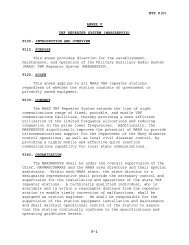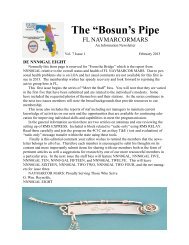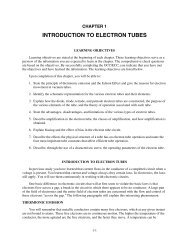NEETS Module 8, Chapter 1
NEETS Module 8, Chapter 1
NEETS Module 8, Chapter 1
Create successful ePaper yourself
Turn your PDF publications into a flip-book with our unique Google optimized e-Paper software.
Figure 1-21.—Negative feedback in a transistor amplifier.Negative feedback is used to improve fidelity of an amplifier by limiting the input signal. Negativefeedback can also be used to increase the frequency response of an amplifier. The gain of an amplifierdecreases when the limit of its frequency response is reached. When negative feedback is used, thefeedback signal decreases as the output signal decreases. At the limits of frequency response of theamplifier the smaller feedback signal means that the effective gain (gain with feedback) is increased. Thiswill improve the frequency response of the amplifier.Q-23. What is feedback?Q-24. What are the two types of feedback?Q-25. What type feedback provides increased amplitude output signals?Q-26. What type feedback provides the best fidelity?Q-27. If the feedback signal is out of phase with the input signal, what type feedback is provided?Q-28. What type feedback is provided by an unbypassed emitter resistor in a common-emittertransistor amplifier?AUDIO AMPLIFIERSAn audio amplifier has been described as an amplifier with a frequency response from 15 Hz to 20kHz. The frequency response of an amplifier can be shown graphically with a frequency response curve.Figure 1-22 is the ideal frequency response curve for an audio amplifier. This curve is practically "flat"from 15 Hz to 20 kHz. This means that the gain of the amplifier is equal between 15 Hz and 20 kHz.Above 20 kHz or below 15 Hz the gain decreases or "drops off" quite rapidly. The frequency response ofan amplifier is determined by the components in the circuit.1-24




